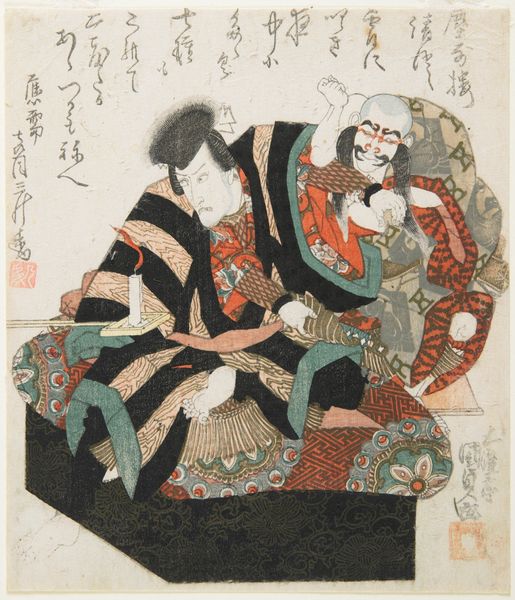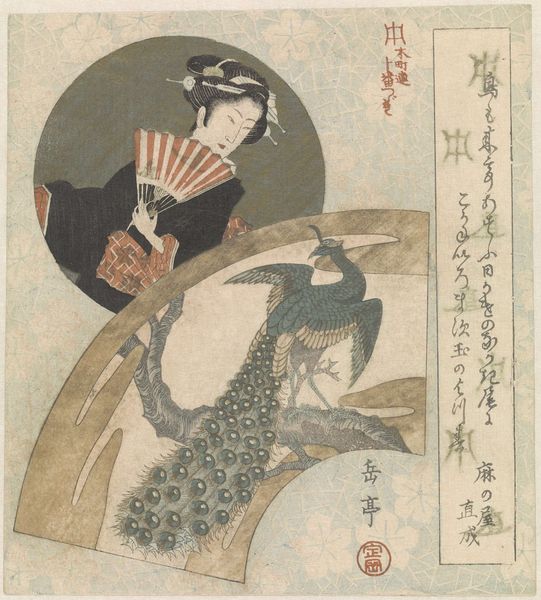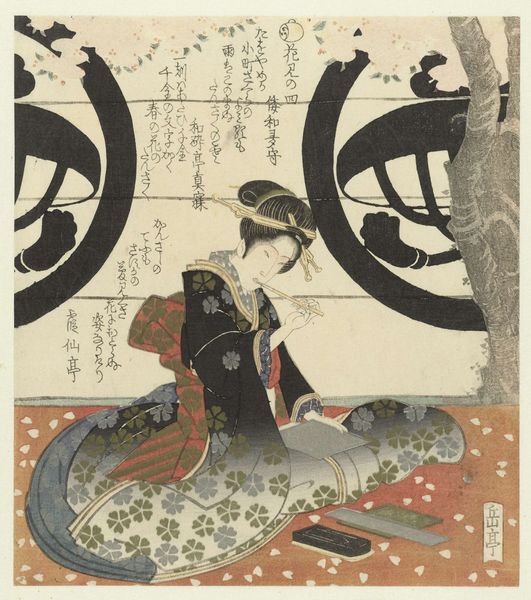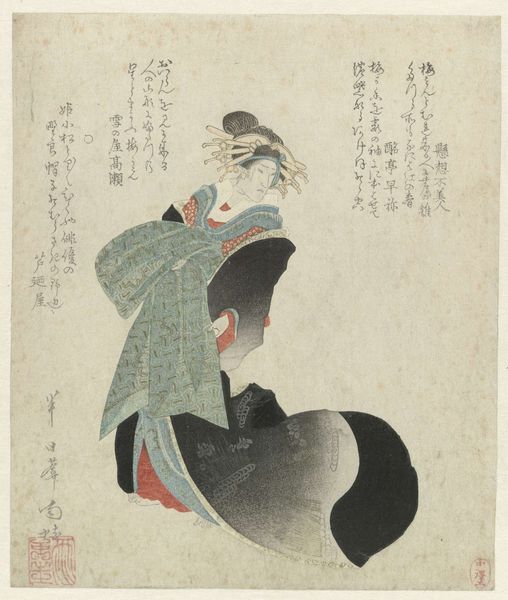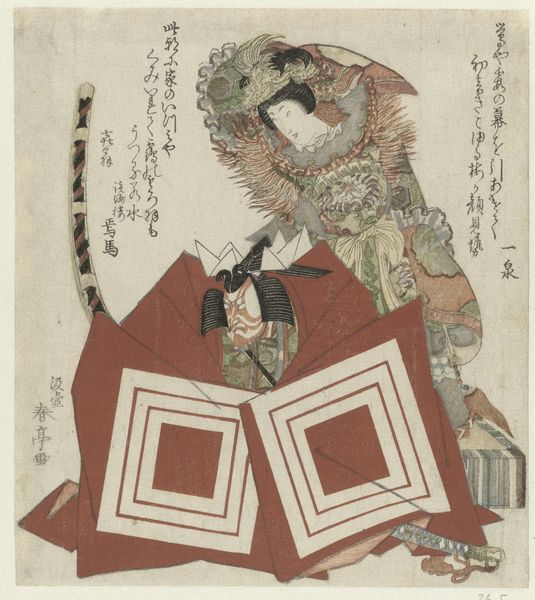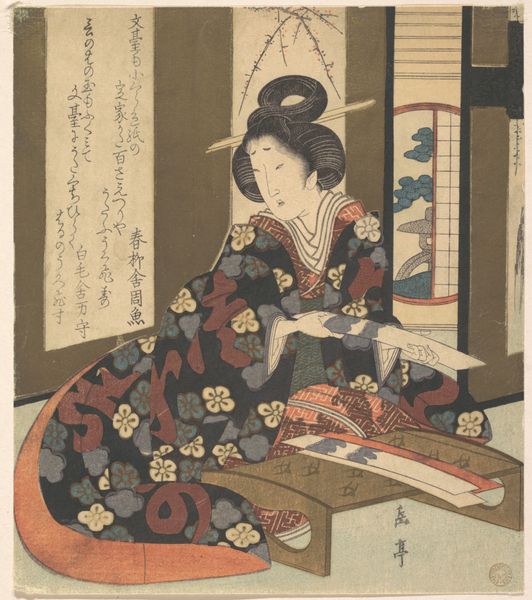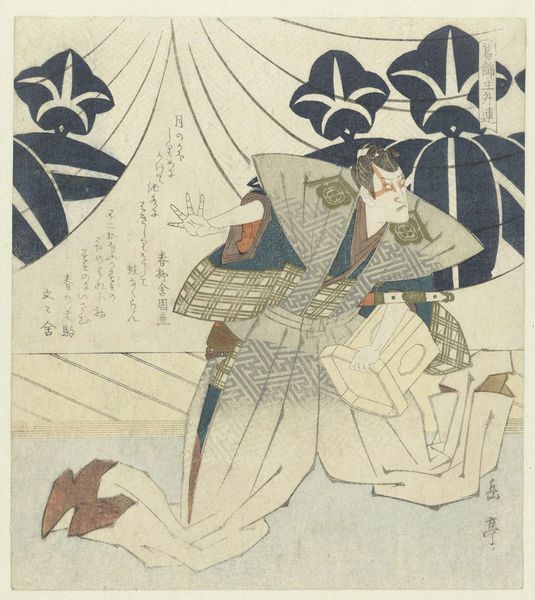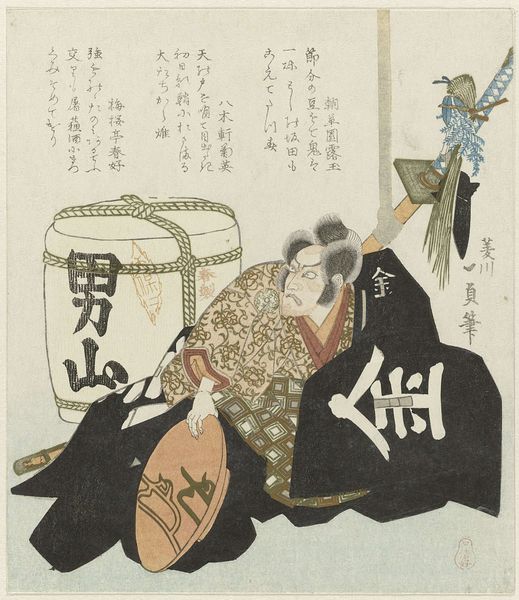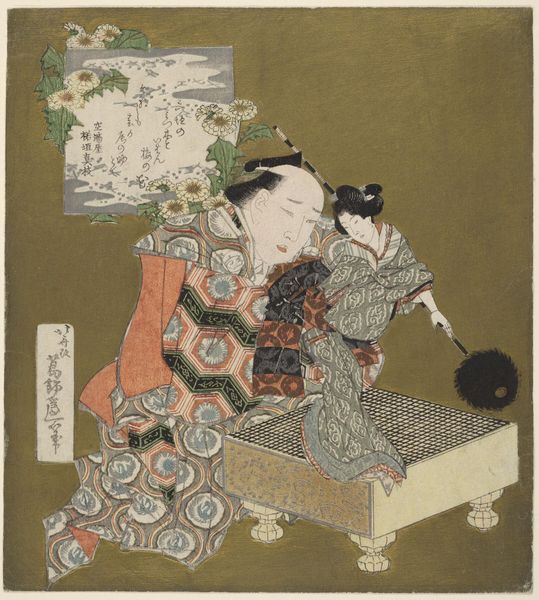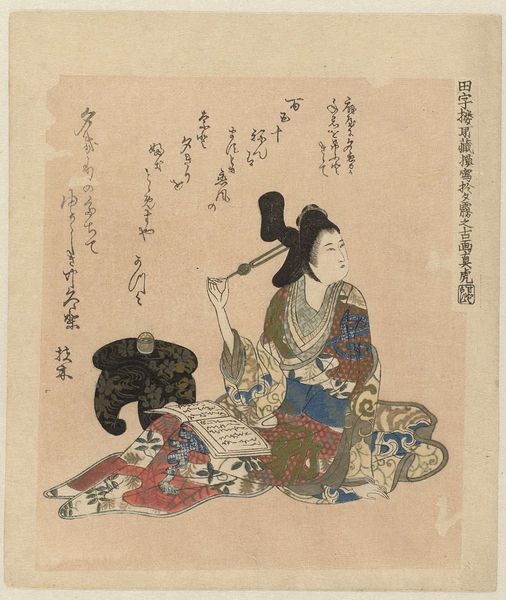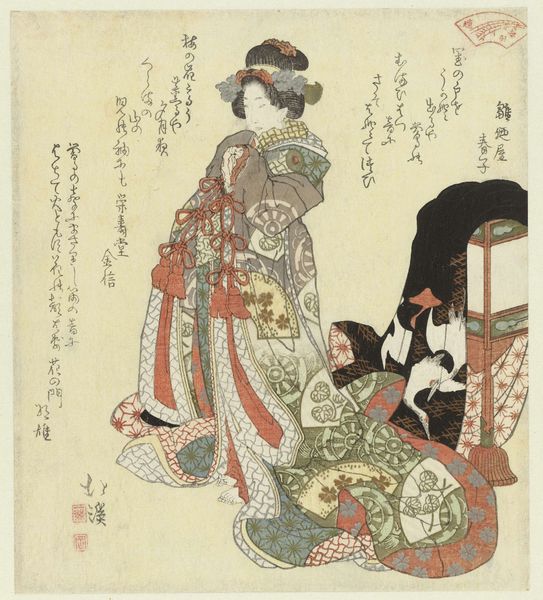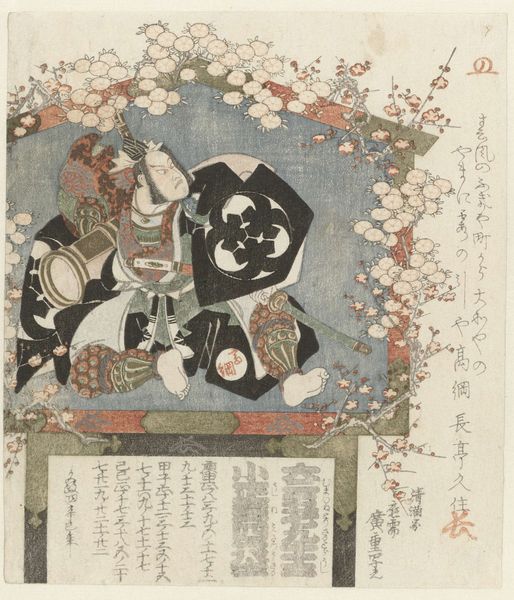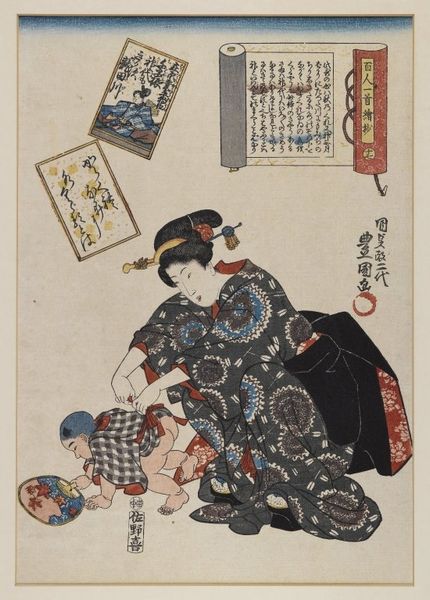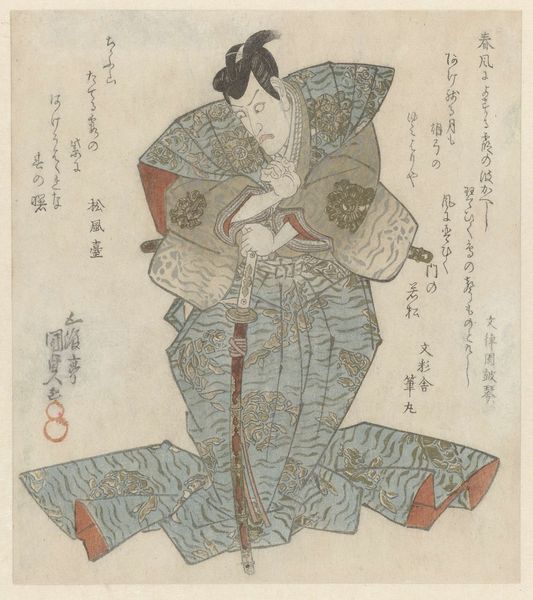
print, paper, ink, woodblock-print
#
portrait
#
water colours
# print
#
asian-art
#
ukiyo-e
#
figuration
#
paper
#
ink
#
woodblock-print
#
watercolour illustration
#
watercolor
Dimensions: height 201 mm, width 179 mm
Copyright: Rijks Museum: Open Domain
Curator: Right, let's look at "Three Actors with a Puppet," a woodblock print by Utagawa Kunisada, dating from around 1815 to 1820. It's currently held at the Rijksmuseum. My first thought is just how *strange* this composition feels, you know? There’s something almost unnerving in those stark expressions, caught mid-performance perhaps. Editor: Unnerving is a great word. To me, though, it’s the flatness that strikes first. Look at how Kunisada handles depth – or rather, doesn't. It throws the emphasis onto the *making*, doesn't it? The carving of the blocks, the layering of the ink...it highlights the material production. This wasn’t just art; it was a manufactured commodity intended for mass consumption. Curator: Manufactured, yes, but what it’s communicating… that is a very emotional scene. And don't forget that we’re viewing this centuries later, stripped of some vital context. These weren’t just portraits of actors but celebrations of specific performances and roles, part of the vibrant, ephemeral world of Edo-period theater. There’s almost an existential ache behind their powdered faces. They knew the stage and theatre so well, so there's definitely a deeply emotional narrative here, don't you think? Editor: The materials themselves carried weight too! Consider the paper, likely kozo, mulberry bark, so carefully cultivated and processed. The inks themselves – lampblack, vegetable dyes – all bearing stories of sourcing and labour. Woodblock prints were produced and distributed, offering relatively affordable slices of theatre life. Curator: See, that's where I find so much beauty and inspiration - this incredible process of layering ink over paper. When you look at how simple watercolours come together, it allows us to look and observe these actors as truly present beings with very unique emotional conditions. The pop, you know? How strange and surreal and playful all in one instance! Editor: Exactly! And playful certainly doesn't mean simple; mass media consumption, after all. Ultimately, examining that process gives insights into class, commerce, and cultural exchange that traditional art history sometimes overlooks. Curator: It brings these prints alive when thinking about the paper, and labor. Suddenly those water colours explode from the material and begin painting a new understanding about what stories truly lay behind their gaze. Editor: Indeed. The dialogue isn’t just in the image; it's woven into the very fabric of its creation.
Comments
No comments
Be the first to comment and join the conversation on the ultimate creative platform.
